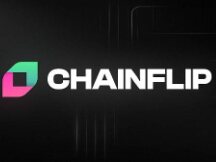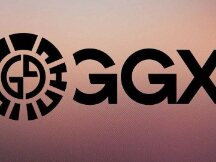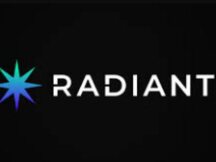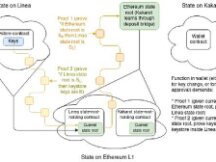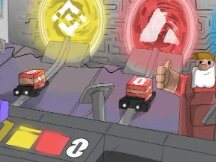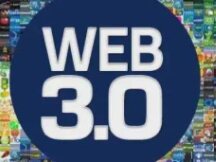In many cases, crosslinking has gradually become a "tight demand". The next question is management?

introduction
We have been in many seasons. From Solana Road to Avalanche and Fantom, the ecology of the new public channel is booming. Cross-chain is not only about link value, but also data and link value, future global blockchain should be multi-chain and cross-chain ecosystem.
As we all know, in a blockchain world, "chains" are synonymous with towns and villages, and in order to communicate, "chains", "bridges" and "roads" must form to meet the needs of pearls. through a variety. era of the chain.
Historically, Ethereum has been successful, but now more and more public chains are starting to appear and support more widely. Together, Bitcoin and Ethereum still hold an important role, but they cannot be the masters of the global blockchain in the sense of the word.
P1
Bitcoin and Ethereum still dominate

While Bitcoin's dominance has waned due to disruption from its competitors, that doesn't necessarily mean failure. This is only proof,This presents some competition for Bitcoin as more money is transferred to other blockchain operations.
Sister tab,Judging by the features and benefits of Bitcoin, the global dominance of Bitcoin still exists and has not yet reached the level of ceding the 'throne' to others.
According to a report by CoinDesk Research,SeptemberThe dominance of Bitcoin, that is, the share of the main cryptocurrency in the total market value of the cryptocurrency, is42%, which is the lowest level in the past four years. However, 42% of the price still proves Bitcoin's 'management' and no other virtual currency can be a real threat.
Most recently, in September, Ethereum was the series' highest record since 2017 (the star of ICOs and CryptoKitties).However, the share of all other blockchains peaked in the last 5 days of September.
As Kaloudis and Oosterbaan pointed out throughout the announcement, the Ethereum crash and high costs necessitated a similar deal, but the growing demand for superior communications resulted in another "layer 1" alternative ( L1). Blockchain is. become more and more popular. .
It was easy to take over the management of the Ethereum mainnet in just a few years. No other compact smart platform has created its own ecosystem.Almost all of TVL's development from other competing platforms can be traced back to the operations and ideas started by Ethereum.
The main Ethereum divide is roughly $ 500 billion in assets that use Ethereum as a port.On-chain assets are the most valuable assets in the DeFi process, and Ethereum offers large and diverse assets including NFTs, including ETH, stablecoins, and other ERC-20 tokens.

the same,Bitcoin is still a leader in the cryptocurrency industry., a token with the company's largest adoption and profit network, achieving uneven levels of security as the illegal political efforts of minors are difficult. It won't seem to change. However, due to the limited capabilities of the Bitcoin network and the limited capabilities of its biggest competitor, Ethereum, no one can expect it to be the leader in this blockchain world.
P2
The multi-chain ecosystem is more and more perfect.

In all aspects of blockchain development, a race for ecological supportive arms from the public chain phase has begun.
This yearavril, Polygon announces $ 100 million DeFi for Total Funds that will support DeFi operations over the next two to three years to increase the adoption, efficiency and experience of DeFi.
In July, Terra announced that it had set up a $ 150 million green fund to support applications in the Terra ecosystem and improve access to the Terra DeFi ecosystem.
In August, the Avalanche Foundation announced that it would provide Avalanche Rush, a $ 180 million liquidation giveaway to mining to support more applications and assets to join the Avalanche DeFi ecosystem. Over $ 5 million in FTM payments.
Following the announcement of mining benefits in August, Avalanche has grown into the community's largest chain. In that month, the Avalanche block has grown from $ 184 million to $ 2.07 billion more than ten times. Among them, the BENQI loan deal now has a stable position of $ 1.2 billion, and the managed token QI rose from $ 0.5 to a high of $ 4 on August 19.

On August 4, Krystal, a multi-chain DeFi management platform, launched Crypto.com, Signum Capital, BlockTower, HyperChain, Arrington Capital, LD Capital, DeFi Alliance, ArkStream Capital, Coin98 and more.
Data from Defi Llama shows that since September 1, DeFi's total foreclosure volume (TVL) has reached an all-time high of $ 161.2 billion. Compared to the same period last year, the total closure of DeFi volume has increased by more than 19. However, the growth of each channel is different, resulting in slower growth of the head of the public channel. Among them, the total Ethereum system volume is estimated at $ 119.4 billion, including most of the market, but from the beginning of this year to May of this year, the total volume of Ethereum volume has increased 350%, but only 28.1% since May. .
As we can see,The structure of many chains has increased and many chain ecologies are also accelerating.
P3
New DeFi requirements in the multi-channel era

In the Ethereum ecosystem, MakerDAO, Compound, and AAVE have become an integral part of DeFi Global's work as pioneering lending. Users agree to use MakerDao's ETH assets to provide secure DAI and then buy back ETH from Uniswap to create more ETH. You can get credit by guaranteeing consumer products like ETH, DAI, USDT, etc. of Compound, by borrowing altcoins to participate in LP mining at Uniswap and guaranteeing LP tokens with AAVE.
The potential for similarities between loans and DEX, liquid mining and derivatives has been established with no capacity and activity restrictions, all of which can be limited to Ethereum or a public separation test.
Due to Ethereum's performance limitations, the public chain is broken., Public exchange channels run by BSC, Heco and Oec, new channels run by SOL, AVAX and FTM, and the Layer 2 result. There is a high temperature of the public test and Layer 2 channels.However, there is no direct connection between the channels, and it loses the best combination of DeFi.
Users cannot share the benefits by borrowing ETH from Ethereum and then borrowing BNB from BSC. Ethereum users who want to join the market of other public channels can only join BSC chain mining when they first sell ETH and then buy BNB, usually only through an exchange in the middle. If ETH increases, mining revenues will not be as high as ETH increases.
In many current seasons, the market clearly needs a full set of loaner chains to solve the problem of DeFi composability between chains.In fact, users can enjoy the DeFi benefits of Channel B by being responsible for leasing Channel A and then borrowing the assets from Channel B.
Taking the public channels BSC and Heco as an example, BSC users who want to join Heco mining can join the only BNB contract on the BSC chain and borrow HT from Heco. You can profit more from other public companies by crossing without having to sell BNB. The Flux result provides a solution for the integration of the integration into the DeFi situation.
P4
Multi-chain coexistence, strict application between chains

In addition to the current Ethereum "Big Brother" blockchain network, new generation chains such as BSC, Solana, Phantom and Avalanche have entered the market one after another. Not too.The integration of multiple chains is an important model in today's market, so the exchange of assets should strictly be contracted by the users of the chain.
The cross-chain protocol gives users easy access to links in the chain, but security is a real concern. Due to the increasing demand for the cross chain industry, the size of the cross chain assets held by the cross chain bridges has continued to increase, which has attracted special attention from thieves. high risk event. Security. Problems.
There were three cross-border apps in July and August of this year, and on July 11, the ChainSwap crossover app was stolen due to a smart contract malfunction, resulting in a loss of around $ 8 million. ; On July 12, an application spilling over to Anyswap v3 across the chain was attacked and caused nearly $ 8 million in damage, and in August the PolyNetwork Crisis Network security and assets lost $ 610 million. been stolen. We are breaking new records. for DeFi applications.
Compared with the third-party application through the chain, the special bridge of the public channel has been approved by the security team and the authorities of the public channel, and its security is also approved by the users, and it is also the preferred cross-chain by users. What to do if the tool has crossed chains.
Binance Choj
Binance Bridge is a cross-platform tool developed by Binance Smart Chain BSC. Currently, it supports the legacy of Binance Smart Chain and the Ethereum network. Heritage assets including USDT, DAI, ETH and over 60 core assets. This cable bridge allows you to move assets between the BSC and the Ethereum network.

The working principle of the bridge crossing is to first close one of the bottom assets, then assemble the bottom assets according to the crossing equipment in the comparison.1: 1. Take the example of the asset cross from Ethereum to BSC, when you want to mine the asset (BETH) from the cross chain to BSC and Ethereum, the asset can be encapsulated (BETH) will be destroyed by remittances. , creating 1: 1 native assets (ETH). In the BSC chain, Ethereum cross chain assets typically occur in the BSC ecosystem as assets, generally defined as B. For example, BETH and BDAI are 1: 1 tam mapped encapsulated assets.
According to the Binance Bridge official website, the current cross sections of key assets are 73,601 BTC, 1.04 million ETH, 1.79 billion USDC and 192 million DAI.
avalanche bridge
The Avalanche Bridge (AB Bridge) is a crossover device developed by the Avalanche protocol in early 2021. It is only used to solve the problem of users switching their devices to the Avalanche network according to the ERC-20 models of the Ethereum chain.

The Avalanche Bridge allows users to experience the communication between the ERC-20 Heritage and the Avalanche C Channel. Currently, only ERC-20 assets are shipped between Ethereum and Avalanche, and trading in Avalanche chain assets is not always supported by Ethereum. Also, bridge AB does not always support ETH or BTC, but WETH and WBTC packages can be shipped through the bridge.
In the Avalanche ecosystem, Ethereum ERC-20 assets that cross the chains of the AB bridge are marked with the word ".e". For example, DAI.e is a form of cross-chain DAI for the Avalanche network.
According to the Avalanche Bridge legal website, there are currently 158 million DAI, 5,615 WBTC, 165,000 ETH, 218 million USDC, 200 million USDT, etc. with assets across the ecosystem.
In addition,Well known links include RainbowBridge, AribitrumBridge, OptimismGateway, etc.
P5
The next problem is the management of connections.

Currently, the decentralized Swapr Switch developed by the decentralized autonomous organization DXdao has been deployed on Arbitrum One, Ethernet mainnet and xDai.Once the inter-chain liquidity issue is resolved, the next issue is connectivity management.In that regard, Aave seems to be the thing. According to insiders, this is a difficult problem to solve and it depends on the communication slowdown as business management can be slow.
Another thing to consider is custom, a hot topic that people are talking about.It is not known if the future of the multichain will cause outrage from the authorities, but nothing is impossible. It's hard to imagine that managers would follow the bottom chain. Conversely, as more and more control is focused on the front-end, the most effective scalable blockchains end up reaching the most decentralized and censorship-resistant front-end.
This will require new technology, another step of improvement in the development of Web3, which shows that DeFi needs more than just a financial channel.

When Ethereum took the lead, cut chains were seen as a need by everyone. Now, with the growth of the new chain and the continuous development of the DeFi ecosystem, the market has become more and more aware.The cross chain has become an integral part of DeFi over many seasons, and the De-cross chain has become an innovation in the industry.
The blockchain industry is changing every day, and more and more seasons are coming, the technology of many public channels will constantly change, and the technology of the bridge, supporting business and sports standards can also be improved and improved. Different circumstances and different regulations are needed to meet different types of bridges, so look forward to the “sanctification” of the public channel!

Scan QR code with WeChat
